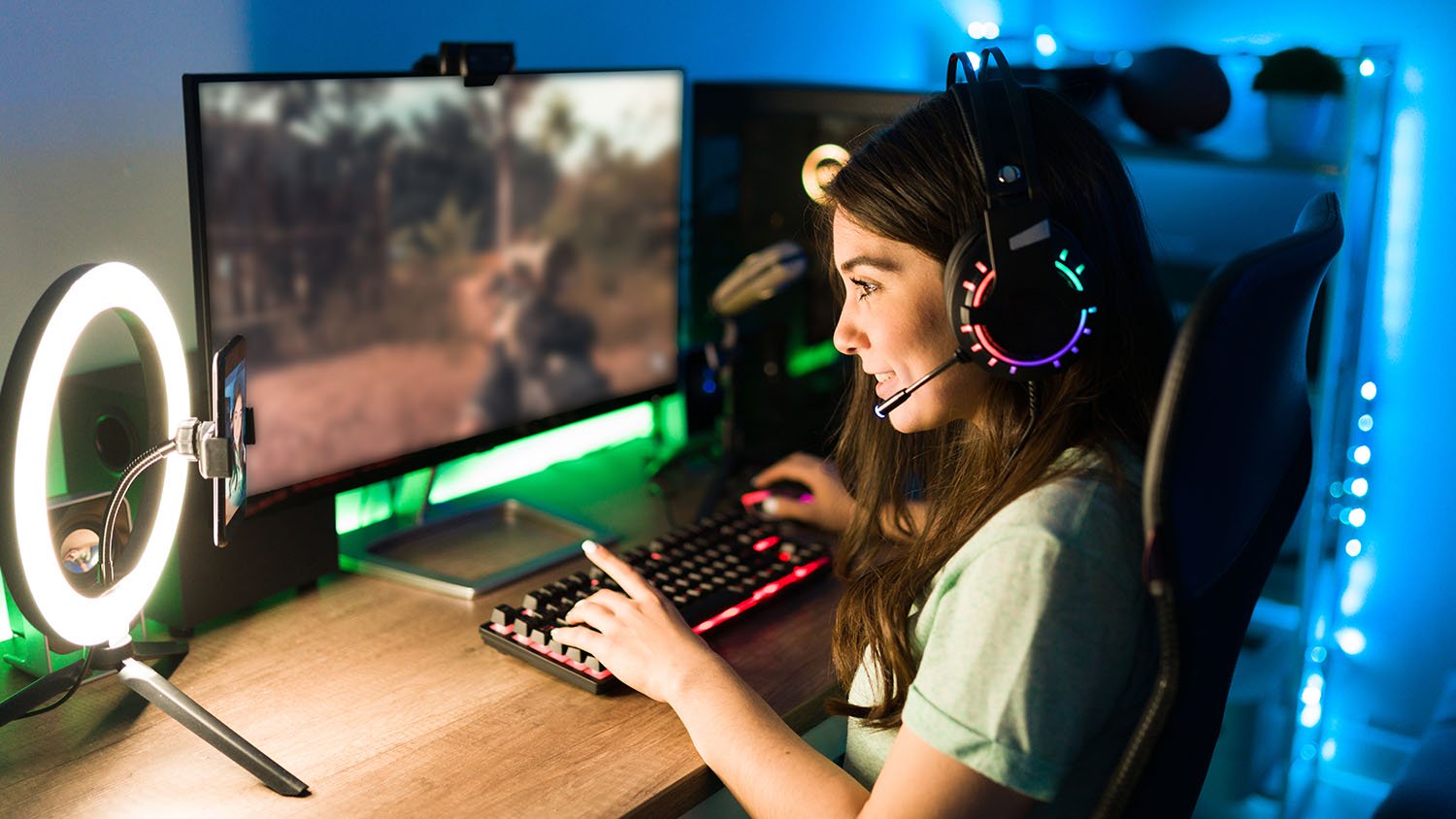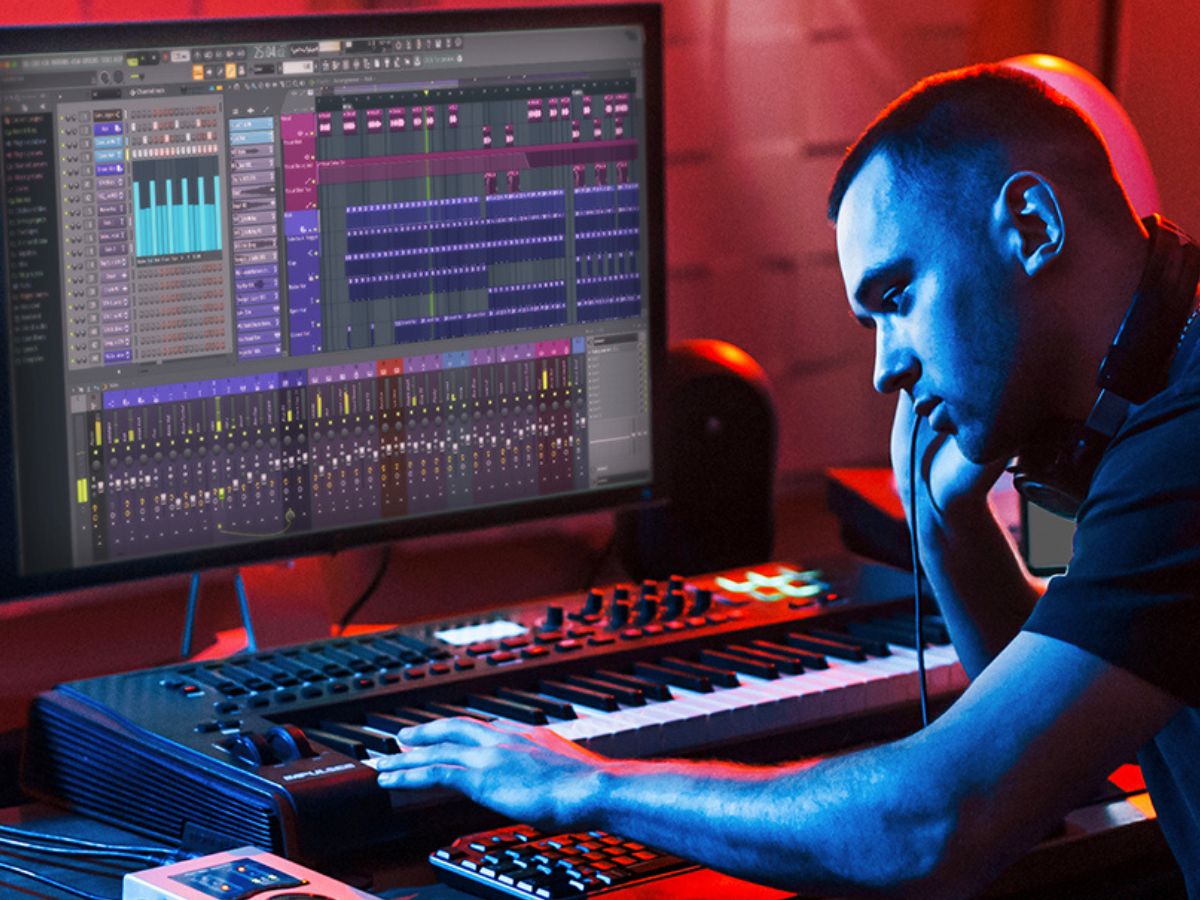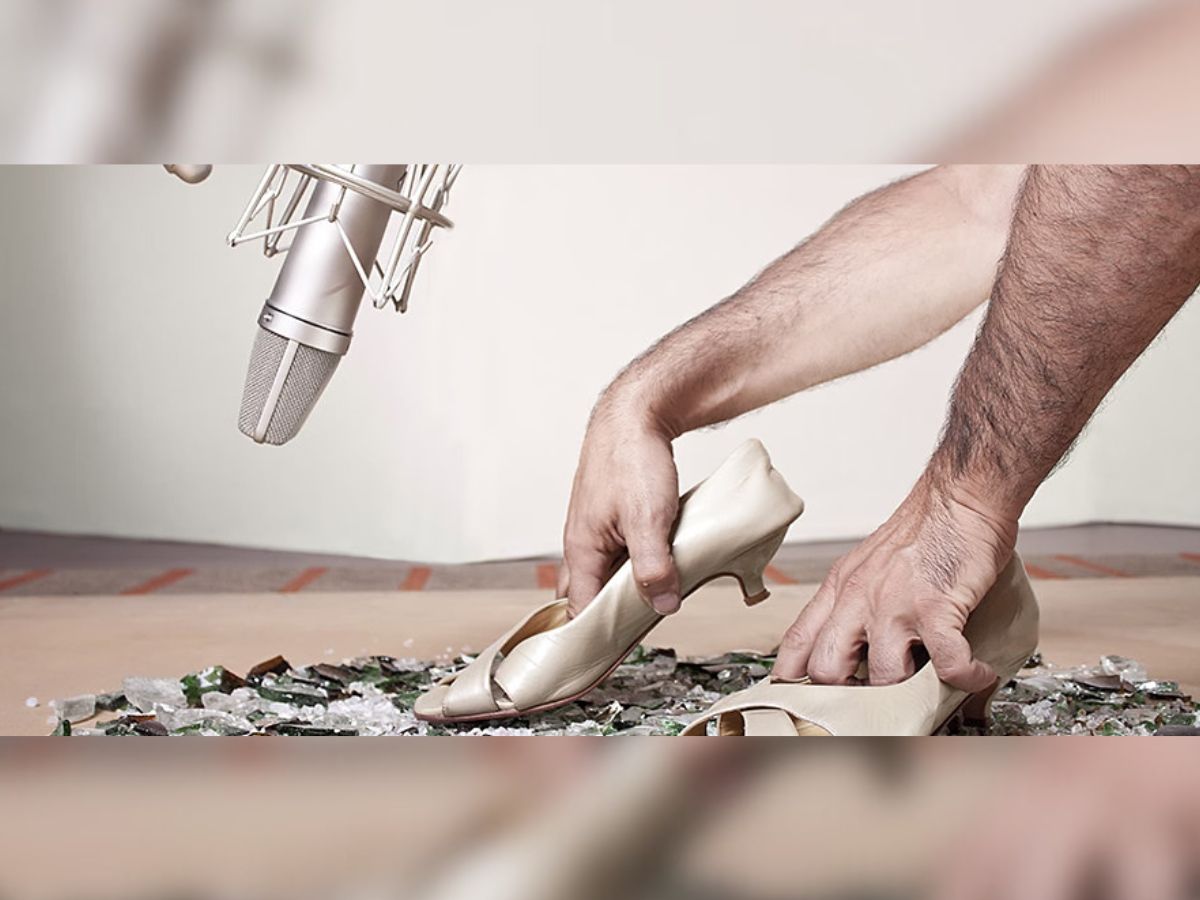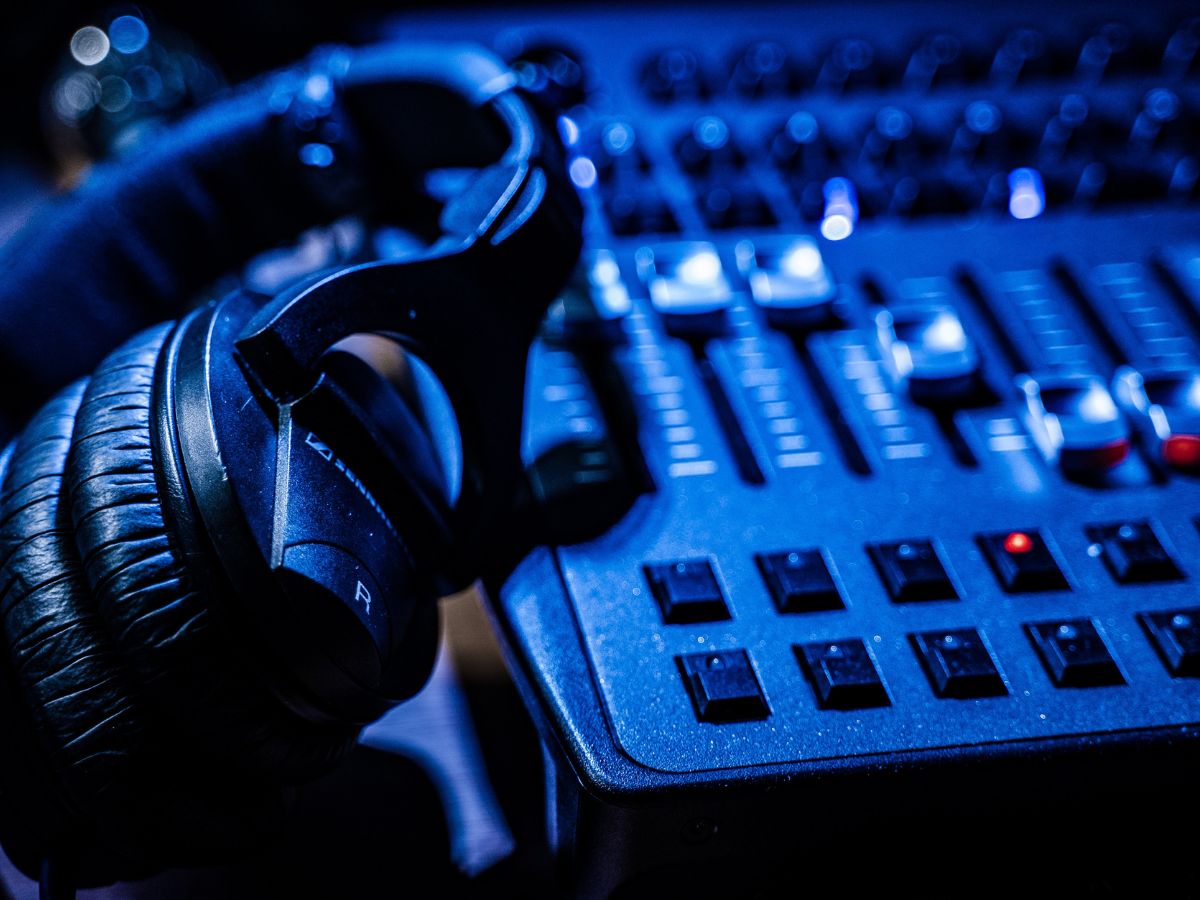Home>Production & Technology>Sound Effects>How Do I Make My Own Sound Effects


Sound Effects
How Do I Make My Own Sound Effects
Modified: February 17, 2024
Learn how to create your own unique sound effects with our step-by-step guide. Perfect for adding a personal touch to your audio projects.
(Many of the links in this article redirect to a specific reviewed product. Your purchase of these products through affiliate links helps to generate commission for AudioLover.com, at no extra cost. Learn more)
Table of Contents
- Introduction
- Choosing the Right Tools
- Understanding the Basics of Sound Design
- Experimenting with Everyday Objects
- Utilizing Digital Software and Tools
- Creating Sound Effects with Foley Techniques
- Exploring Field Recording
- Editing and Mixing Sound Effects
- Incorporating Sound Effects into Your Projects
- Conclusion
Introduction
Sound effects play a crucial role in enhancing the audio experience of various forms of media, from movies and television shows to video games and podcasts. They add depth, realism, and emotional impact to the visuals, helping to immerse the audience in the storytelling. However, finding the right sound effects can be a challenge, and relying solely on pre-existing libraries may limit your creative options.
If you’re looking to add a personal touch to your projects or simply want to explore the world of sound design, making your own sound effects can be an exciting and rewarding experience. With a little creativity and the right tools, you can create unique, custom sound effects that perfectly complement your artistic vision.
In this article, we will guide you through the process of making your own sound effects. We will explore various techniques, tools, and approaches that you can use to bring your ideas to life. Whether you’re a filmmaker, game developer, podcaster, or just a curious enthusiast, this article will provide you with the knowledge and inspiration to start creating your own sound effects.
From understanding the basics of sound design to exploring field recording and utilizing digital software, we will cover a range of topics to help you master the art of sound effects creation. So, let’s dive in and discover how you can make your own sound effects and elevate your audio projects to new heights!
Choosing the Right Tools
When it comes to creating your own sound effects, having the right tools is crucial. While professional studios may have access to high-end equipment and software, you don’t necessarily need a huge budget to get started. Here are some essential tools you’ll need:
- Recording Device: A good quality audio recorder is essential for capturing sounds. You can use anything from a portable handheld recorder to a smartphone with a high-quality microphone.
- Microphones: Different types of microphones serve different purposes. Dynamic microphones are ideal for capturing loud and intense sounds, while condenser microphones are more sensitive and detailed, making them great for capturing subtle nuances.
- Headphones: A pair of high-quality headphones will help you monitor and listen to your recordings with precision and clarity.
- DIY Sound Effects Toolkit: Get creative with a collection of household items that can be used to produce unique sound effects. Objects like keys, cans, rice, and even your own voice can be versatile tools for sound creation.
- Sound Design Software: There are numerous digital audio workstations (DAWs) available, ranging from free options like Audacity to professional software like Adobe Audition and Pro Tools. Choose a DAW that suits your needs and fits your budget.
It’s important to remember that while having high-quality tools can enhance your sound effects, the most critical aspect is your creativity and imagination. Don’t be afraid to experiment and think outside the box when choosing your tools. Sometimes, the most unexpected objects or techniques can produce the most stunning and original sound effects.
Additionally, the environment in which you record can impact the quality of your sound effects. Consider setting up a small home studio or finding quieter locations to minimize unwanted background noise and ensure cleaner recordings.
Now that you have an idea of the tools you’ll need, let’s dive deeper into the fundamentals of sound design to understand how you can create impactful and realistic sound effects.
Understanding the Basics of Sound Design
Before diving into the process of creating your own sound effects, it’s essential to have a solid understanding of the basics of sound design. Sound design is the art of creating and manipulating audio elements to enhance the overall audio experience and evoke specific emotions in the audience.
There are four key elements to consider when it comes to sound design:
- Frequency: Frequency refers to the pitch or tonal quality of a sound. It is measured in hertz (Hz) and determines whether a sound is high or low. Understanding frequency helps you choose the right sounds to create the desired impact.
- Amplitude: Amplitude refers to the volume or loudness of a sound. It is measured in decibels (dB) and influences the intensity of a sound effect. Controlling the amplitude allows you to create a sense of depth and dynamics in your audio.
- Duration: Duration refers to the length of a sound. It determines how long a sound effect will play and impacts the pacing and timing of your project.
- Texture: Texture refers to the character or quality of a sound. It describes the timbre, resonance, and overall sonic characteristics of a sound effect. Understanding texture helps you choose sounds that fit the intended mood and atmosphere.
By manipulating these elements, you can create unique and engaging sound effects that capture the essence of your project. It’s essential to consider these elements when designing your own sound effects, as they contribute to the overall cohesion and impact of your audio.
Apart from understanding the technical aspects, it’s also crucial to consider the emotional and psychological impact of sound. Certain sounds can evoke specific emotions and help to tell a story. For example, a sudden loud bang can create tension or fright, while a gentle breeze can evoke a sense of calm or serenity.
As you develop your sound design skills, pay attention to how sound can enhance and support the visuals. Experiment with different combinations of sounds and observe how they interact with the imagery. This will enable you to create a more immersive and cohesive audiovisual experience.
Now that you have a solid foundation in sound design, it’s time to start experimenting and creating your own unique sound effects. In the next sections, we will delve into different techniques and approaches you can use to bring your sound ideas to life.
Experimenting with Everyday Objects
One of the most accessible and fun ways to create your own sound effects is by experimenting with everyday objects around you. These objects can produce unique sounds that add a touch of originality to your projects. Here are some techniques you can try:
- Percussion: Explore the world of percussion by using objects like pots and pans, keys, bottles, or wooden surfaces. Experiment with different striking techniques and surfaces to get a wide range of percussive sounds.
- Layering: Combine multiple sounds by layering them to create more complex and dynamic effects. For example, you can combine the sound of crumpling paper with the crunch of footsteps to create a unique and textured sound.
- Manipulating Objects: Use objects like doors, chairs, and utensils to create mechanical and movement sounds. Experiment with opening and closing doors, scraping surfaces, or shaking objects to capture interesting textures.
- Human Sounds: Don’t forget the versatility of the human voice. Experiment with different vocal techniques such as whispers, screams, or various vocalizations to mimic or create unique sound effects.
- Nature Sounds: Step outside and capture the sounds of nature. From rustling leaves and flowing water to birds chirping and wind howling, nature offers a plethora of natural sound effects that can enhance your projects.
When experimenting with everyday objects, be open to the unexpected. Sometimes the most mundane objects can produce fascinating and unexpected sounds. Get creative and try combining objects in unconventional ways to create sounds that have never been heard before.
As you explore different objects and techniques, keep in mind the four elements of sound design we discussed earlier. Pay attention to the frequency, amplitude, duration, and texture of the sounds you create and how they fit within the context of your project.
Don’t limit yourself to just one technique or object. The beauty of experimenting with everyday objects is the limitless possibilities it offers. Embrace your curiosity, have fun, and let your imagination run wild as you discover new and exciting sounds.
Now that you’ve explored the world of everyday objects, let’s move on to exploring digital tools and software that can expand your sound effects repertoire even further.
Utilizing Digital Software and Tools
While experimenting with everyday objects can yield fantastic results, digital software and tools can take your sound effects creation to a whole new level. These tools provide you with an extensive range of options and flexibility in manipulating and fine-tuning your sounds. Here are some digital software and tools you can use:
- Digital Audio Workstations (DAWs): DAWs are powerful software applications that allow you to record, edit, and mix audio. Popular DAWs include Adobe Audition, Pro Tools, Logic Pro, and Ableton Live. These platforms offer a comprehensive set of tools and plugins to enhance your sound effects.
- Virtual Instruments: Virtual instruments are software-based synthesizers and samplers that replicate real-life instruments or create unique synthesized sounds. With virtual instruments, you can add realistic instrument sounds or generate otherworldly sound effects.
- Effects Plugins: Effects plugins are software modules that can modify and enhance sounds. They can simulate reverb, delay, distortion, modulation, and various other effects to add depth and character to your sound effects.
- Sample Libraries: Sample libraries offer pre-recorded sound samples that you can incorporate into your projects. These libraries often contain a wide variety of sounds, from nature elements to specific object sounds, giving you instant access to a vast collection of high-quality sound effects.
- Sound Generators: Sound generators, such as synthesizers or noise generators, allow you to create entirely new sounds from scratch. These tools give you complete control over the frequency, amplitude, and texture of the sounds you create.
When utilizing digital software and tools, take the time to familiarize yourself with the features and capabilities of each tool. Experiment with different parameters and settings to create unique and customized sound effects. Don’t be afraid to think outside the box and explore unconventional ways of using these tools to achieve the desired result.
Additionally, digital tools also offer convenience and efficiency in editing and manipulating your sound effects. You can easily trim, layer, and mix different elements, adjusting them to fit perfectly within your project’s timeline and visual elements.
Remember, the key to utilizing digital software and tools effectively is to strike a balance between experimentation and understanding the fundamentals of sound design. Use the power of technology to enhance your creativity, but also keep in mind the four elements of sound design discussed earlier. By mastering the combination of digital tools and creative sound design techniques, you can further elevate your sound effects to new heights.
Now that you have a solid foundation in utilizing digital software and tools, let’s delve into the world of Foley techniques and how they can enhance your sound effects creation process.
Creating Sound Effects with Foley Techniques
Foley is a technique widely used in the film and television industry to create and enhance sound effects. It involves the art of performing and recording everyday sounds that synchronize with the visuals on screen. By using Foley techniques, you can add a level of realism and authenticity to your sound effects. Here’s how you can create sound effects using Foley:
- Foley Props: Gather a collection of props that represent different objects and actions you want to recreate. These can include shoes for footsteps, clothing for movement sounds, or various objects for interactions.
- Foley Performance: Watch the visuals and perform the actions that correspond to the sound effects you want to create. Walk, run, open doors, handle objects, or perform any other relevant actions with the Foley props.
- Foley Recording: Use a microphone and a quiet recording environment to capture the sound of the Foley performance. Pay attention to the timing and synchronization with the visuals to ensure accurate and seamless integration.
- Foley Editing: Import the recorded Foley sounds into your digital audio workstation. Trim, adjust, and layer them as needed to fit perfectly with the visuals. Use editing techniques to enhance the sounds and create a cohesive audio experience.
Foley techniques allow you to create detailed and nuanced sound effects that are specifically tailored to the visuals. It adds a level of realism and immersion that can greatly enhance the viewer’s experience. By performing the actions yourself or with a Foley artist, you have complete control over the intensity, speed, and character of the sound effects.
When using Foley techniques, pay attention to details and variations in performances. Every surface, object, and movement can produce different sounds, so adding subtle variations in your Foley performances can make your sound effects more authentic and believable.
Moreover, Foley techniques can be combined with other sound design approaches, such as using everyday objects or digital tools, to create truly unique and rich sound effects. The combination of techniques allows for a wide range of possibilities and lets you explore different creative avenues.
Now that you have a grasp of Foley techniques, let’s move on to the next section and explore the world of field recording and how it can expand your sound effects library even further.
Exploring Field Recording
Field recording is the practice of capturing sounds in real-world environments. It involves taking your recording equipment on location and capturing sounds that are unique to specific settings or events. Field recording allows you to gather a diverse range of sound effects that may not be easily replicated in a controlled environment. Here’s how you can explore field recording:
- Select an Environment: Choose a location that aligns with the sound effects you want to capture. It can be a busy street, a serene forest, a bustling market, or any other setting that suits your project’s needs.
- Plan and Prepare: Before heading out, research the location and its soundscape. Take note of potential challenges such as background noise or unwanted interruptions. Plan your recording sessions accordingly to capture the desired sounds effectively.
- Utilize the Right Equipment: Ensure you have the appropriate equipment for field recording. A portable audio recorder, high-quality microphones, windshields or blimps to reduce wind noise, and a sturdy tripod or suspension mount are essential for capturing clean and professional-quality field recordings.
- Be Patient and Observant: Take your time at the location and be observant of the sounds around you. Sometimes, the most interesting sound effects can occur unexpectedly. Be patient and wait for those moments to capture unique and captivating sounds.
- Vary Your Perspectives: Experiment with different microphone placements and angles to capture a variety of perspectives and spatial arrangements of the sound. This will give you more flexibility during the editing and mixing process.
- Take Safety Precautions: Ensure your safety while recording in outdoor or potentially hazardous environments. Take necessary precautions and follow local laws and regulations. Be mindful of your surroundings and respectful towards others.
- Post-Processing and Editing: Once you have recorded your field sounds, import them into your digital audio workstation for post-processing and editing. Trim, clean up any unwanted noise, and enhance the recordings to ensure they are ready for use in your projects.
Field recording offers a unique opportunity to capture authentic and organic sound effects that can transport your audience to different environments and enhance the realism of your projects. It allows you to create a sense of place and atmosphere that may be challenging to achieve through other means.
Additionally, field recordings can serve as a valuable resource for future projects. By building a library of diverse and high-quality field recordings, you’ll have a rich collection of sound effects at your disposal, ready to be used creatively in multiple projects.
Now that you’re familiar with field recording, let’s move on to the next section and explore the process of editing and mixing sound effects to achieve a polished and cohesive audio experience.
Editing and Mixing Sound Effects
Editing and mixing sound effects is a crucial step in the sound design process. It involves refining and organizing the recorded sounds, adjusting their characteristics, and blending them harmoniously with other audio elements. Here’s how you can edit and mix your sound effects:
- Import and Organize: Start by importing your sound effects into your chosen digital audio workstation (DAW). Organize them into folders or tracks for easier access and management.
- Trimming and Crossfading: Listen to each sound effect and trim any unnecessary portions. Use crossfades or fades-in/out to ensure smooth transitions and eliminate any abrupt changes in the audio.
- Auditory Cleaning: Apply audio cleaning techniques to remove any unwanted background noise or imperfections in the recordings. This can include using noise reduction tools or EQ adjustments to enhance the clarity and fidelity of the sound effects.
- Layering and Blending: Experiment with layering multiple sound effects to create depth and richness. Adjust the volume and panning of each layer to create a balanced mix that suits the spatial placement of the sound effects in the project.
- Effects and Processing: Apply effects or processing techniques to shape the characteristics of your sound effects. This can include adding reverb or delay to create a sense of space, EQ adjustments to enhance specific frequencies, or distortion to add grit and texture where needed.
- Dynamics and Automation: Adjust the dynamics of the sound effects to ensure they sit well within the overall mix. Use compression, volume automation, and other dynamic processing techniques to achieve a consistent and controlled audio experience.
- Synchronization: Ensure the timing and synchronization of the sound effects align seamlessly with the visual elements. Make precise edits and adjustments to match the sound effects with the desired on-screen action and cues.
- Testing and Fine-tuning: Regularly test your sound effects in the context of your project. Listen for any inconsistencies or elements that need further refinement. Make iterative adjustments and fine-tune the mix until you achieve the desired audio experience.
Editing and mixing sound effects require attention to detail, creative decision-making, and a keen ear. As you progress, you’ll develop an understanding of how different sound effects can work together to create a harmonious and immersive audio experience.
When mixing sound effects, it’s important to consider their relationship with other audio elements, such as music, dialogue, and ambient sounds. Strike a balance between these elements to ensure they don’t overpower each other and blend seamlessly to create a cohesive audio mix.
Remember, the editing and mixing process is an iterative one. Continuously listen, adjust, and refine your sound effects until they enhance and elevate the storytelling and visuals of your project.
Now that we’ve covered the process of editing and mixing sound effects, let’s move on to the final section of incorporating sound effects into your projects.
Incorporating Sound Effects into Your Projects
After creating and refining your sound effects, the next step is incorporating them into your projects effectively. This involves integrating the sound effects into the visuals and audio elements to create a cohesive and immersive experience. Here’s how you can incorporate sound effects into your projects:
- Understanding the Narrative: Familiarize yourself with the narrative and intention of your project. Understand the emotions you want to evoke and the story you want to tell. This will guide you in selecting and placing the appropriate sound effects.
- Emphasizing Key Visual Elements: Identify crucial visual moments or key actions in your project. Choose sound effects that enhance and emphasize these elements, adding impact and enhancing the overall storytelling.
- Matching Sound Effects to Visual Cues: Pay attention to the timing and synchronization between the visuals and sound effects. Ensure that the sound effects align precisely with the on-screen actions, creating a realistic and immersive audio-visual experience.
- Creating Atmosphere and Ambience: Use background and ambient sound effects to create a sense of environment and atmosphere. This can include adding subtle sounds like wind, birds chirping, or distant city sounds to enhance the realism and depth of the scene.
- Transitioning Between Scenes: Smoothly transition between different scenes or locations by using appropriate transitional sound effects. This can include using sound effects like whooshes, swishes, or musical transitions to create a seamless flow.
- Balancing with Dialogue and Music: Ensure a proper balance between sound effects, dialogue, and music. Each element should be distinct and discernible while working harmoniously together to serve the overall project’s narrative. Use mixing techniques to adjust the levels and frequencies to achieve a balanced audio mix.
- Test and Iterate: Regularly test your sound effects within the context of your project. Listen carefully and gather feedback to ensure that the sound effects are enhancing the visuals and serving the project’s goals. Make necessary adjustments and refinements as needed.
Remember that sound effects are powerful storytelling tools that add depth, realism, and emotion to your projects. They have the ability to enhance the visuals, evoke specific moods, and engage the audience on a subconscious level.
Be creative and don’t be afraid to experiment with different combinations of sound effects. Look for opportunities to create contrasts or surprises that can evoke emotions or add layers of meaning to your project.
By thoughtfully incorporating sound effects into your projects, you’ll bring your visuals to life and create a memorable and impactful audio experience for your audience.
With this knowledge, you are now equipped to embark on your journey of creating remarkable sound effects and elevating your audio projects to new heights. So, go forth, experiment, and let your creativity soar!
Conclusion
Creating your own sound effects is an exciting and rewarding journey that allows you to add a unique and personal touch to your audio projects. By understanding the basics of sound design, experimenting with everyday objects, utilizing digital software and tools, exploring Foley techniques, engaging in field recording, and mastering the art of editing and mixing, you can craft exceptional sound effects that enhance the storytelling and immerse your audience in the experience.
Throughout this article, we’ve explored various techniques and approaches to help you create your own sound effects. We’ve emphasized the importance of selecting the right tools, understanding the elements of sound design, and unleashing your creativity to think outside the box. We’ve discussed how everyday objects, digital software, Foley techniques, and field recording can expand your sound effects library and offer endless possibilities.
We’ve also highlighted the significance of editing and mixing, ensuring that your sound effects are seamlessly integrated into your projects. And finally, we’ve discussed the importance of incorporating sound effects strategically, emphasizing key visual moments, and creating a balanced audio mix that complements the dialogue and music.
As you embark on your journey of creating sound effects, remember to have fun, be curious, and persevere. Developing your skills in sound design is a continuous process that requires experimentation, practice, and a willingness to learn from both successes and failures. The more you explore and push the boundaries, the more unique and compelling your sound effects will become.
So, grab your recording equipment, get inspired, and let your imagination run wild. With the techniques and knowledge you’ve gained, you’re well-equipped to create remarkable sound effects that will captivate your audience and bring your audio projects to life.
Good luck on your sound effects creation journey, and enjoy the remarkable world of sound design!











